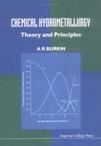化学湿法冶金学
2001-12
Pengiun Group (USA)
Burkin, A.R.
414
Hydrometallurgy is a field of chemical technology concerned with the production of metals from their ores and secondary sources. Modern hydrometallurgy began with the need to obtain uranium in the 1940s and extended into new areas with the development of pressure hydrometallurgy in the mid-1950s and acceptance of solvent extraction as an industrial scale process for copper production in the late 1960s to early 1970s. With the introduction of new processes for many metals, the present stage of development of hydrometallurgy has come to maturity and a survey of the current state of the field is timely. This book is derived from the lectures on the principles on which hydrometallurgical processes are based, given as part of the undergraduate and MSc courses in hydrometallurgy which Professor A R Burkin gave from 1961 until he retired in 1988. Professor Burkin's earlier book, The Chemistry of Hydrometallurgical Processes, was regarded as the major work in the field. This is his long awaited new textbook.
PrefaceChapter 1 Ore Minerals 1.1 Types of Ore Mineral 1.2 Types of Crystal Lattice 1.2.1. Introduction 1.2.2. Silicate Structures 1.2.3. Oxides. 1.2.4. SulphidesChapter 2 Equilibrium in Aqueous Solutions 2.1 Introduction 2.2 Ionic Activities 2.2.1. Debye-Hiickel Theory 2.2.2. Extension to More Concentrated Solutions 2.2.3. Extension to Mixed Electrolyte Solutions 2.2.4. Application of Pitzer's Equations; SomeWorked Examples 2.3 Metal Complex Formation and Equilibrium Constants 2.3.1. Complex Formation 2.3.2. Thermodynamics of Equilibrium Constants 2.3.3. Selection of Values of Equilibrium Constants 2.4 Complex Formation or Ion Association?Chapter 3 Thermodynamics of Reactions 3.1 Introduction 3.2 Standard Free Energies of Formation 3.3 Predominance Area Diagram for the Fe-H2O System, 298.15 K 3.3.1. Reactions Involving Dissolved Species and Solids, Nonredox 3.3.2. Reactions Involving Oxidation and Reduction 3.3.3. The Hydrogen Scale 3.3.4. The pe Scale 3.3.5. Equilibria between Solids 3.3.6. Equilibria between Ions and Solids 3.3.7. Equilibria between Ions 3.3.8. Representation of Equilibria 3.3.9. Discussion of the Diagram, Fig. 3.1 3.4 The Sulphur-Water System, 298.15 K 3.4.1. Data Used 3.4.2. Acid Dissociation Constants 3.4.3. Redox Equilibria 3.4.4. Discussion of the Diagram, Fig. 3.2 3.5 The Copper- Sulphur- Water System, 298.15 K 3.5.1. Data Used 3.5.2. Equilibria 3.5.3. Discussion of the Diagram, Fig. 3.3 3.6 Thermodynamics of Electrolyte Solutions at ElevatedTemperatures 3.6.1. Construction of Predominance Area Diagrams for Elevated Temperatures 3.6.2. The S-H2O System, 423 K 3.6.3. The Cu-S-H2O System, 423 K 3.6.4. The Fe-S-H2O System, 423 K 3.6.5. Estimation of Entropies and Heat Capacities of Ionic Species 3.7 Precipitation of Metals from Solution by Reduction 3.7.1. Introduction 3.7.2. Deposition of Metals by Electrolysis 3.7.3. Precipitation of Metals by Hydrogen Gas 3.8 Precipitation of Compounds from Solution 3.8.1. Introduction 3.8.2. The Second Dissociation Constant of H2S(aq) 3.8.3. Precipitation of Sparingly Soluble Metal Sulphides ……Chapter 4 Kinetics of Heterogeneous Reactions in HydrometallurgyChapter 5 Chemistry of Leaching ProcessesAppendixReferencesIndex
